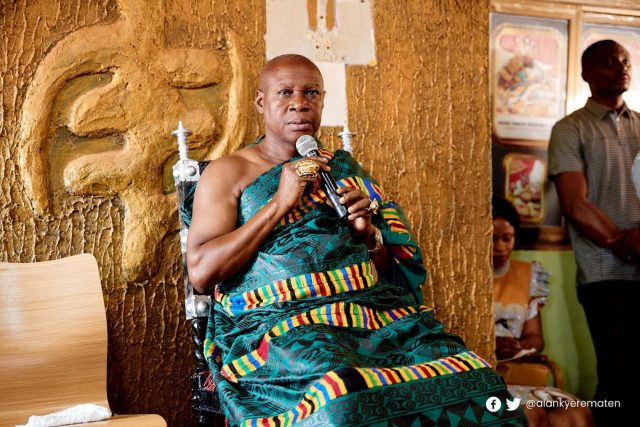Source: Boakye-Sarfo Clement
The bustling market of Goaso, nestled in the heart of the Ahafo Regional capital, found itself abuzz with intrigue and confusion on April 17th, 2024. What stirred this commotion? The unexpected appearance of individuals collecting taxes from market women sent shockwaves through the community. This surprising turn of events left many bewildered and seeking answers.
When queried by Genesis Radio about this unusual taxation, the Municipal Chief Executive (MCE) of the Asunafo North Municipal Assembly, Honorable Osei Yaw Boahen, found himself without a direct response. Instead, the revelation came from an unexpected source: the Mbrante3hene of the Goaso Traditional Council. He disclosed that the directive to levy taxes on market vendors originated from the traditional council itself.
The genesis of this decision stems from the dissatisfaction among market women regarding the transition from the old market to the new premises. The Asunafo North Municipal Assembly had orchestrated a relocation plan, intending to pave the way for the construction of a comprehensive project dubbed the “Secondary Support Project.” This initiative promised a modern market complex replete with amenities such as schools, fire services, and a mini-clinic. However, the transition process faced significant hurdles, leaving the market women grappling with the challenges of operating in a dilapidated market space.
Recognizing the plight of the market women, Nana Kwasi Bosompra, the Goasomanhene, expressed grave concerns about their struggles. In response, he invoked the authority vested in the traditional council to take matters into his own hands. The decision to initiate tax collection emerged as a means to generate funds for the development of the market, ensuring that the vendors’ needs were not neglected amidst the transition.
While the traditional council acted decisively to address the pressing concerns of the market community, the Asunafo North Assembly remained conspicuously silent on the matter. Their lack of clarification regarding the traditional council’s intervention only served to deepen the confusion among citizens.
The crux of the issue lies in the discrepancy between the promises of development and the realities faced by the market women. While the assembly embarked on ambitious plans for a modern market complex, the interim period left much to be desired. The market women found themselves grappling with substandard facilities and inadequate support, prompting the traditional council to intervene on their behalf.
As the saga unfolds, the citizens of Goaso await further explanations from the Asunafo North Assembly regarding the divergence between their plans and the realities on the ground. Clarity is essential to bridge the gap between expectations and experiences, ensuring that the interests of all stakeholders, particularly the market women, are duly addressed.
In the interim, the emergence of new tax collectors at Goaso Market serves as a stark reminder of the complexities inherent in development initiatives and the imperative of responsive governance in navigating such challenges. Only through open communication and concerted efforts can communities like Goaso forge ahead toward a brighter, more equitable future for all.
















